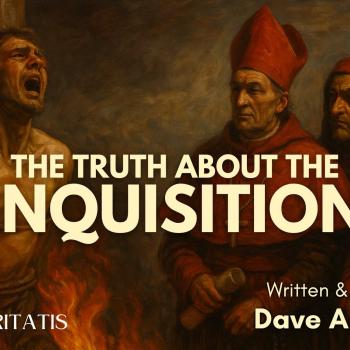Bonewits' approach to polytheism echoes the reality of corporate capitalism in obvious and significant ways. Like corporations, the gods and goddesses of his theology are emergent entities or energy patterns, created and invested with "mana" by a collection of individuals, whether clergy or shareholders, prophets or venture capitalists, lay worshippers or everyday customers. We conceive of and treat these energy patterns as deities or persons in our worship and ritual in order to augment our ability to work with and relate to them effectively. In the same way, corporatized businesses are treated as "persons" under U.S. law in order to simplify taxation and regulation, while companies choose trademarked mascots and figureheads to represent them in the marketplace and provide a "face" for public relations.
In Bonewits' theology, gods and goddesses are in tacit competition for the attention and energy-investment of worshippers. They reward their followers with blessings and moments of inspiration in order to outshine other deities, attract new believers, and provoke future worship that will ensure their continued existence and growth. Yet precisely because of this competition, no strict hierarchy can be said to exist among the myriad deities. Just like in the business world, newcomers and start-ups can quickly come to prominence if they can deliver what worshippers (or consumers) want in a way that engages, entertains, increases enjoyment, or appeals to a person's sense of self-worth and self-betterment. Perhaps most tellingly, according to Bonewits, once a deity becomes large enough and powerful enough, it can begin to act as if it were an independent being in its own right, beyond the control or intentions of its clergy and community of believers. Bonewits seems to welcome this growth as entirely positive, enabling a deity to access power and influence beyond the scope of the merely human world. Yet if we look to the parallel process of corporate growth and business monopoly, we can see some potentially terrifying consequences as well.
When companies choose to corporatize, the decision is often made in order to mitigate risk and encourage further growth and investment. While the owner(s) of a private company can be held personally responsible for the potential debt or damages that their company may cause, once a business has grown large enough to corporatize, that risk is dissipated. The investors and executives of a corporation are protected by law from both the risk and the responsibility for that corporation's activities. It is the corporation, as a collective entity with the legal standing of a "person" but without a person's ethical sensibilities or concern for the quality of life for itself and others, which shoulders the responsibilities and risks of executive decision making. Thus, the corporation brings with it access to greater influence, power, and wealth beyond those that private business owners could achieve on their own, in the same way that Bonewits describes the emergent independence of the gods as providing worshippers such power and blessings. Like the dangerous policies and unchecked greed of many large corporations, however, such a view of the gods also opens the door wide to power-mongering and irresponsibility. Worshippers can find themselves swept up in spiritual and social patterns of their own making that are unhealthy and unwieldy, placing the blame for these patterns on the influence of uncontrollable deities.
The influence that modern consumer capitalism exerts on Bonewits' thinking is everywhere evident in the metaphors he chooses to describe what he implies are basic, "bare-bones" ideas about theology and ritual. The result of his corporate-model of polytheology is a ritual structure that resembles a complex business transaction of complicated contracts for services, payments, and expenditures. There is little room in such ritual for spontaneity or the organic navigation of numinous relationships with deity. Instead, his approach almost always places the example of ceremonial magic at the center of ritual activity, subsuming all liturgy (communal worship and praise) and theurgy (seeking self-perfecting union with the divine) within the more particular category of thaumaturgy (magical or wonder-working). With his background in ceremonial magic and occult studies, it is no surprise that this method of ritual speaks deeply to Bonewits. But it would be a mistake to attempt to extend this preference too far, transforming it into a definitive theology of its own.
We have already seen the damage that casual uses of metaphor can do in a theological context. For more than a millennium, various Christian institutions have relied on gendered language in holy texts to support patriarchy, misogyny, and homophobia; they have relied on metaphors of dominion and domination to justify the exploitation of natural resources and the pollution of the earth; and they have invoked feudal conceptions of honor, debt, and satisfaction that continue to give rise to structures of hierarchy, disempowerment, and marginalization. Of course, many Christian institutions strive for equality and responsibility, for social justice and liberation, and for respect and love for the earth and all of its beings. But often they must struggle for these causes against the language and metaphors embedded deeply in the history of their own religious tradition, and in direct conflict with Christians quite willing to take such metaphors literally and at face-value.




